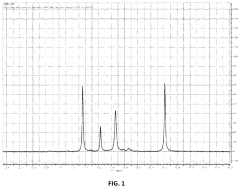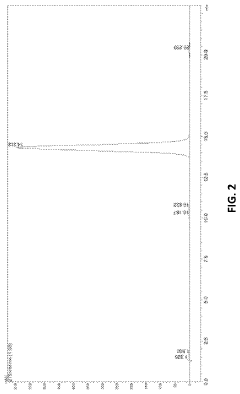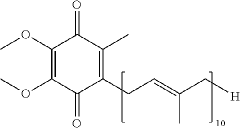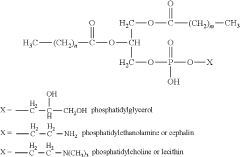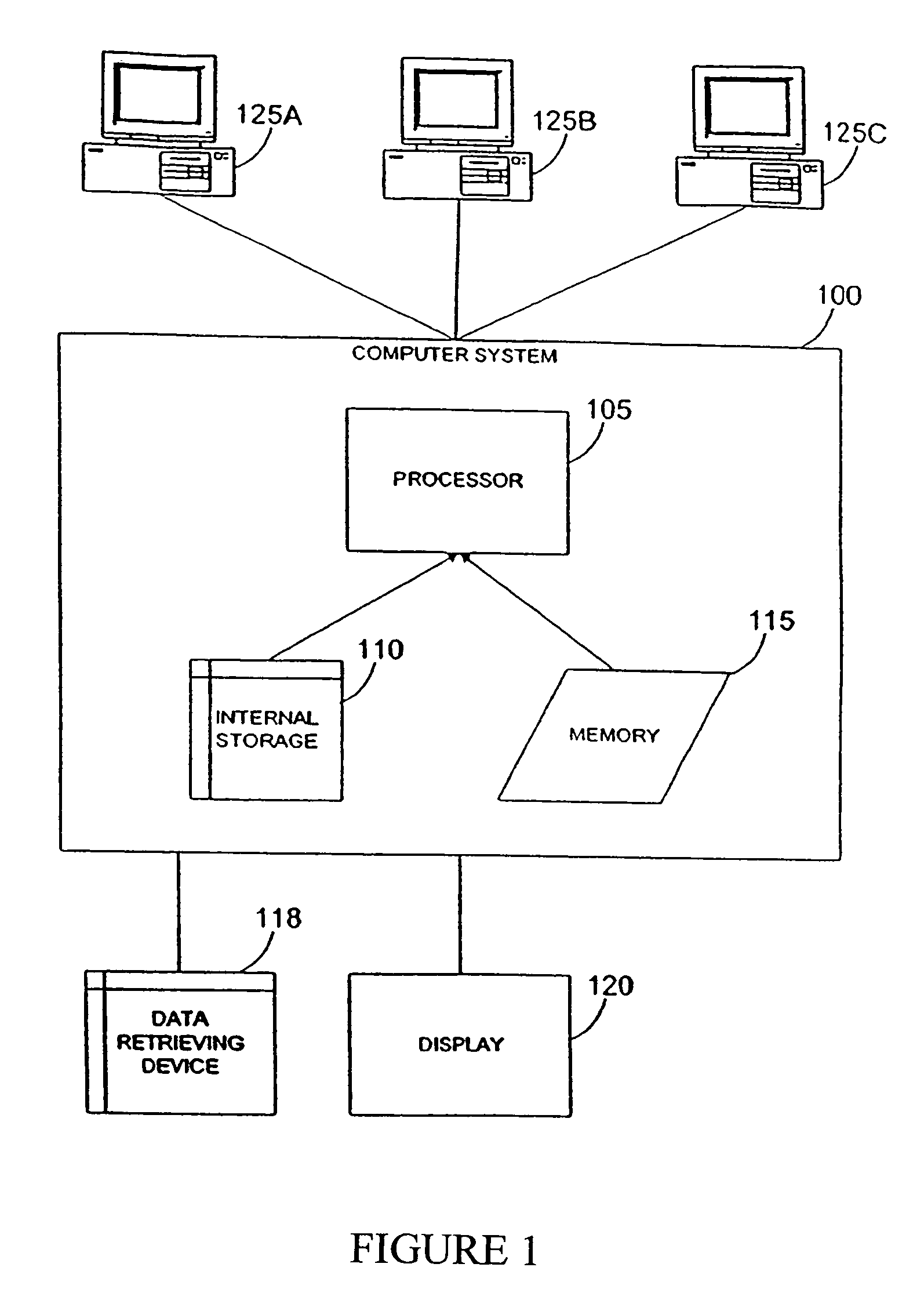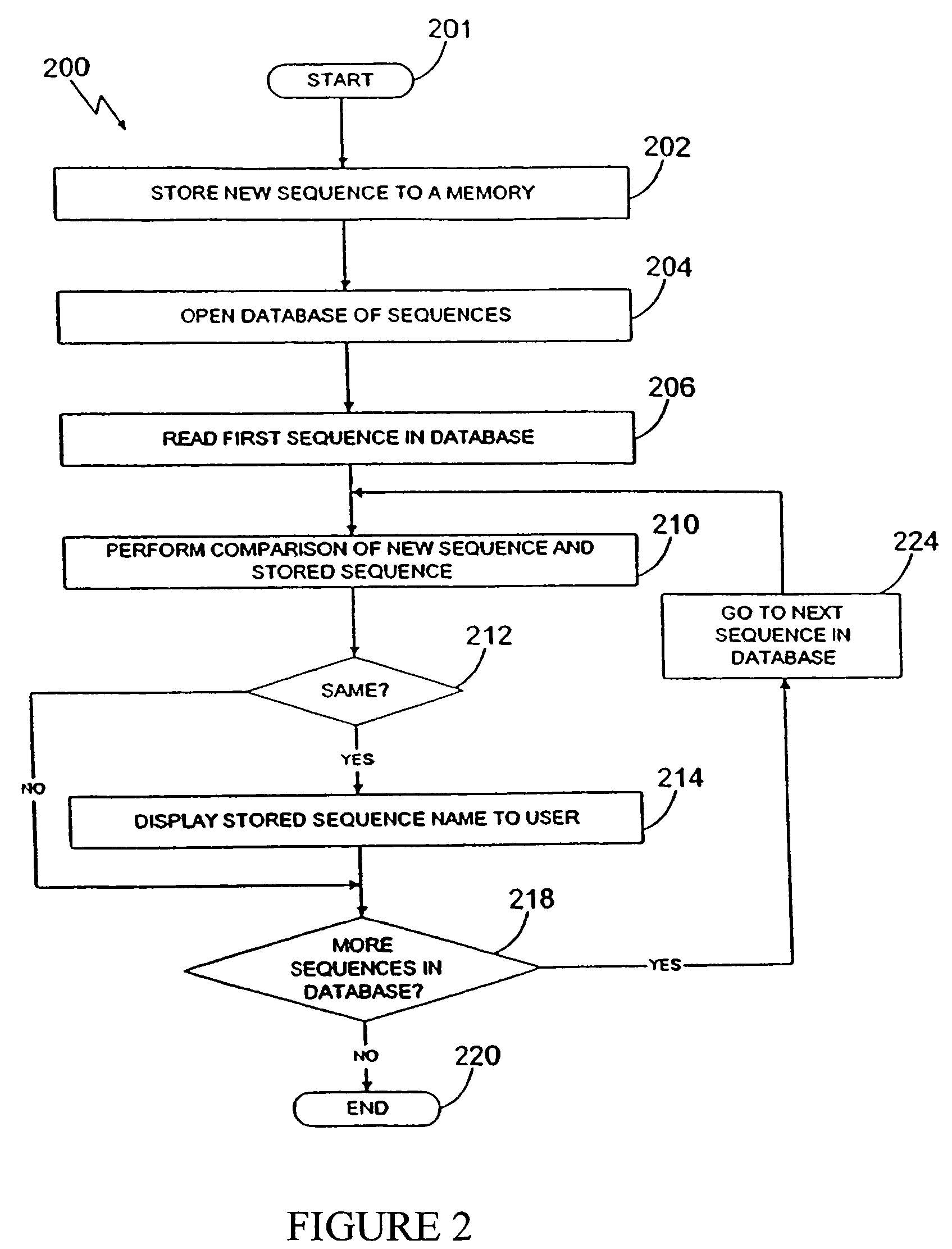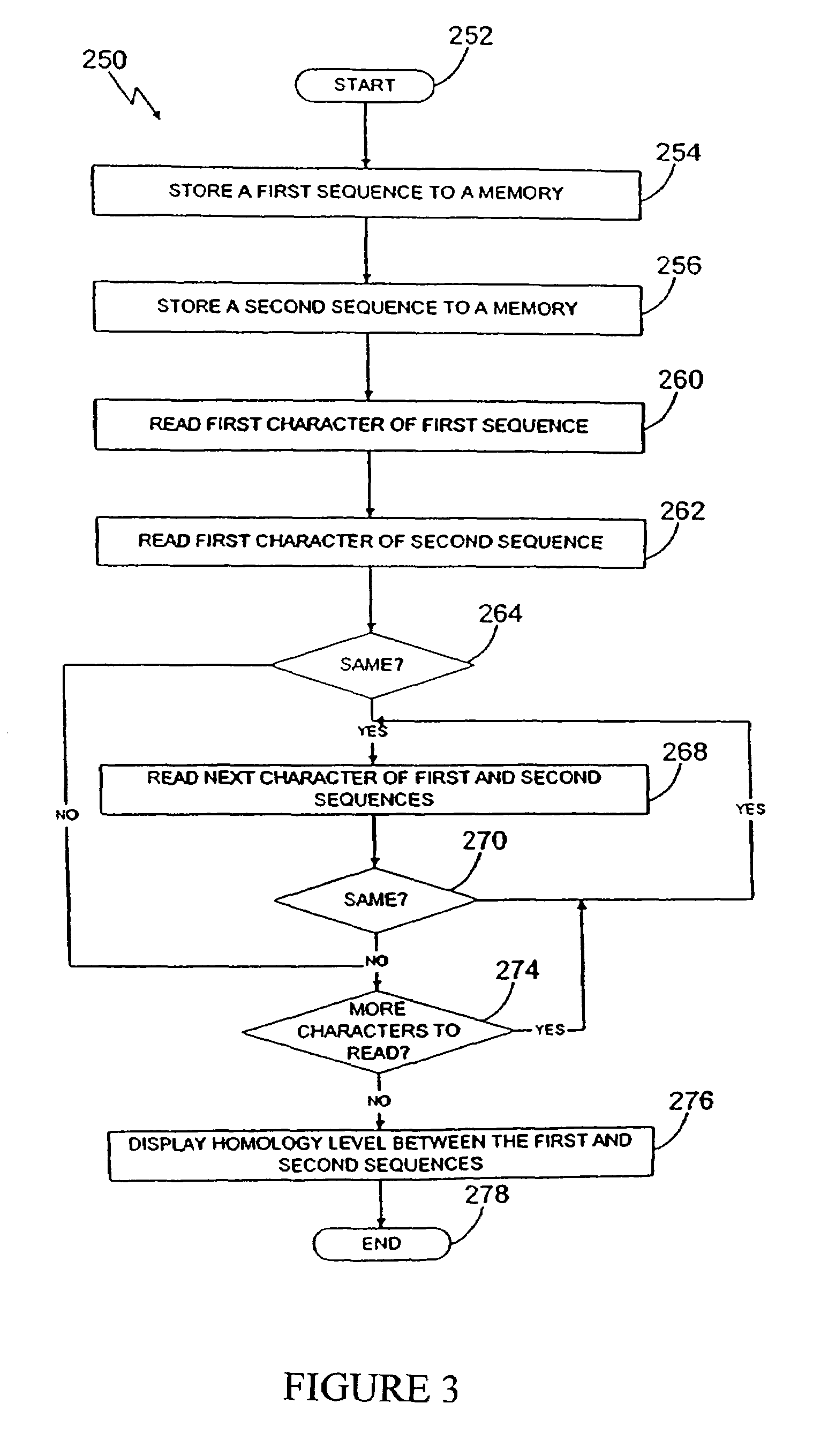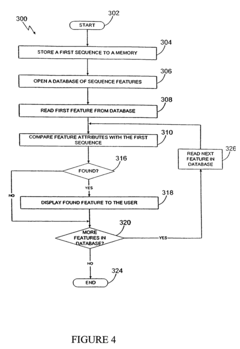How Phospholipids Enhance Biochemical Reaction Rates?
JUL 16, 20259 MIN READ
Generate Your Research Report Instantly with AI Agent
Patsnap Eureka helps you evaluate technical feasibility & market potential.
Phospholipid Catalysis Background and Objectives
Phospholipids, the primary components of cell membranes, have long been recognized for their structural role in biological systems. However, recent research has unveiled their unexpected catalytic properties, particularly in enhancing biochemical reaction rates. This emerging field of phospholipid catalysis represents a paradigm shift in our understanding of cellular biochemistry and holds significant promise for biotechnological applications.
The study of phospholipid catalysis traces its roots to the early observations of enhanced enzymatic activities in membrane-bound proteins. As research progressed, it became evident that phospholipids themselves could act as catalysts, accelerating various biochemical reactions even in the absence of enzymes. This discovery has led to a surge of interest in understanding the mechanisms behind phospholipid-mediated catalysis and exploring its potential applications.
The primary objective of research in this field is to elucidate the precise mechanisms by which phospholipids enhance reaction rates. This includes investigating the role of lipid composition, membrane curvature, and local pH in catalytic efficiency. Additionally, researchers aim to identify specific reactions that benefit most from phospholipid catalysis and to develop synthetic phospholipid systems that can mimic or surpass the catalytic properties of natural membranes.
Another key goal is to explore the implications of phospholipid catalysis for cellular metabolism and signaling. Understanding how these membrane components influence reaction kinetics could provide new insights into cellular processes and potentially reveal novel therapeutic targets for various diseases. Furthermore, this research seeks to bridge the gap between in vitro observations and in vivo relevance, addressing questions about the physiological significance of phospholipid-enhanced reactions.
From a technological perspective, the field aims to harness phospholipid catalysis for practical applications. This includes developing more efficient biocatalysts for industrial processes, designing novel drug delivery systems, and creating biomimetic materials with enhanced catalytic properties. The potential for phospholipid-based nanocatalysts in green chemistry and sustainable manufacturing processes is particularly promising.
As the field evolves, interdisciplinary collaboration becomes increasingly crucial. Biochemists, biophysicists, and materials scientists are working together to develop new experimental techniques and theoretical models to study phospholipid catalysis at the molecular level. Advanced imaging technologies, computational simulations, and high-throughput screening methods are being employed to accelerate progress in this rapidly growing area of research.
The study of phospholipid catalysis traces its roots to the early observations of enhanced enzymatic activities in membrane-bound proteins. As research progressed, it became evident that phospholipids themselves could act as catalysts, accelerating various biochemical reactions even in the absence of enzymes. This discovery has led to a surge of interest in understanding the mechanisms behind phospholipid-mediated catalysis and exploring its potential applications.
The primary objective of research in this field is to elucidate the precise mechanisms by which phospholipids enhance reaction rates. This includes investigating the role of lipid composition, membrane curvature, and local pH in catalytic efficiency. Additionally, researchers aim to identify specific reactions that benefit most from phospholipid catalysis and to develop synthetic phospholipid systems that can mimic or surpass the catalytic properties of natural membranes.
Another key goal is to explore the implications of phospholipid catalysis for cellular metabolism and signaling. Understanding how these membrane components influence reaction kinetics could provide new insights into cellular processes and potentially reveal novel therapeutic targets for various diseases. Furthermore, this research seeks to bridge the gap between in vitro observations and in vivo relevance, addressing questions about the physiological significance of phospholipid-enhanced reactions.
From a technological perspective, the field aims to harness phospholipid catalysis for practical applications. This includes developing more efficient biocatalysts for industrial processes, designing novel drug delivery systems, and creating biomimetic materials with enhanced catalytic properties. The potential for phospholipid-based nanocatalysts in green chemistry and sustainable manufacturing processes is particularly promising.
As the field evolves, interdisciplinary collaboration becomes increasingly crucial. Biochemists, biophysicists, and materials scientists are working together to develop new experimental techniques and theoretical models to study phospholipid catalysis at the molecular level. Advanced imaging technologies, computational simulations, and high-throughput screening methods are being employed to accelerate progress in this rapidly growing area of research.
Biochemical Industry Demand Analysis
The biochemical industry has witnessed a surge in demand for phospholipid-enhanced reaction systems, driven by their potential to significantly improve reaction rates and overall process efficiency. This growing interest stems from the increasing need for more sustainable and cost-effective production methods in various sectors, including pharmaceuticals, food processing, and biofuel production.
In the pharmaceutical sector, phospholipids have gained attention for their ability to enhance drug delivery systems and improve the bioavailability of active pharmaceutical ingredients. The industry's focus on developing more targeted and efficient therapies has led to a rising demand for phospholipid-based formulations. This trend is expected to continue as personalized medicine and nanotechnology-based drug delivery systems gain prominence.
The food processing industry has also recognized the potential of phospholipids in improving the stability and functionality of food products. Emulsifiers and stabilizers based on phospholipids are increasingly sought after for their natural origins and clean label appeal. As consumers demand healthier and more natural food options, the use of phospholipid-enhanced processes in food production is likely to expand.
Biofuel production represents another significant area of growth for phospholipid-enhanced biochemical reactions. The push for renewable energy sources has intensified research into more efficient biofuel production methods. Phospholipids have shown promise in enhancing the activity of enzymes used in biofuel synthesis, potentially leading to higher yields and reduced production costs.
The demand for phospholipid-enhanced biochemical reactions is further fueled by the broader trend towards green chemistry and sustainable manufacturing practices. Industries are increasingly seeking ways to reduce their environmental footprint while maintaining or improving product quality and process efficiency. Phospholipids, being naturally occurring and biodegradable, align well with these sustainability goals.
Research institutions and biotechnology companies are investing heavily in understanding and optimizing phospholipid-enhanced reaction systems. This has led to a growing body of knowledge and technological advancements, which in turn is driving further industry adoption. The development of novel phospholipid formulations and their applications in diverse biochemical processes is expected to open up new market opportunities and drive continued growth in demand.
As the benefits of phospholipid-enhanced reactions become more widely recognized and understood, it is anticipated that their application will expand into new areas of the biochemical industry. This could include emerging fields such as synthetic biology, tissue engineering, and advanced materials production, further broadening the market potential for phospholipid-based technologies.
In the pharmaceutical sector, phospholipids have gained attention for their ability to enhance drug delivery systems and improve the bioavailability of active pharmaceutical ingredients. The industry's focus on developing more targeted and efficient therapies has led to a rising demand for phospholipid-based formulations. This trend is expected to continue as personalized medicine and nanotechnology-based drug delivery systems gain prominence.
The food processing industry has also recognized the potential of phospholipids in improving the stability and functionality of food products. Emulsifiers and stabilizers based on phospholipids are increasingly sought after for their natural origins and clean label appeal. As consumers demand healthier and more natural food options, the use of phospholipid-enhanced processes in food production is likely to expand.
Biofuel production represents another significant area of growth for phospholipid-enhanced biochemical reactions. The push for renewable energy sources has intensified research into more efficient biofuel production methods. Phospholipids have shown promise in enhancing the activity of enzymes used in biofuel synthesis, potentially leading to higher yields and reduced production costs.
The demand for phospholipid-enhanced biochemical reactions is further fueled by the broader trend towards green chemistry and sustainable manufacturing practices. Industries are increasingly seeking ways to reduce their environmental footprint while maintaining or improving product quality and process efficiency. Phospholipids, being naturally occurring and biodegradable, align well with these sustainability goals.
Research institutions and biotechnology companies are investing heavily in understanding and optimizing phospholipid-enhanced reaction systems. This has led to a growing body of knowledge and technological advancements, which in turn is driving further industry adoption. The development of novel phospholipid formulations and their applications in diverse biochemical processes is expected to open up new market opportunities and drive continued growth in demand.
As the benefits of phospholipid-enhanced reactions become more widely recognized and understood, it is anticipated that their application will expand into new areas of the biochemical industry. This could include emerging fields such as synthetic biology, tissue engineering, and advanced materials production, further broadening the market potential for phospholipid-based technologies.
Current State and Challenges in Phospholipid Catalysis
The field of phospholipid catalysis has witnessed significant advancements in recent years, yet it still faces several challenges that hinder its widespread application. Currently, researchers have successfully demonstrated the catalytic potential of phospholipids in various biochemical reactions, particularly in enhancing reaction rates and selectivity. These lipid-based catalysts have shown promise in areas such as drug delivery, biosensors, and green chemistry.
One of the primary challenges in phospholipid catalysis is the limited understanding of the precise mechanisms by which these molecules enhance reaction rates. While it is known that phospholipids can create unique microenvironments that facilitate chemical transformations, the exact nature of these interactions remains elusive. This lack of mechanistic insight hampers the rational design of more efficient phospholipid-based catalytic systems.
Another significant hurdle is the stability of phospholipid assemblies under diverse reaction conditions. Many biochemical processes require specific pH ranges, temperatures, or the presence of certain ions, which can disrupt the delicate structure of phospholipid membranes. Researchers are actively working on developing more robust phospholipid formulations that can withstand a broader range of reaction environments without losing their catalytic properties.
The scalability of phospholipid-catalyzed reactions presents another challenge. While these systems show excellent performance at the laboratory scale, translating this success to industrial applications has proven difficult. Issues such as mass transfer limitations, product separation, and catalyst recovery need to be addressed to make phospholipid catalysis viable for large-scale production processes.
Furthermore, the selectivity of phospholipid catalysts, although improved compared to traditional methods, still requires enhancement for certain applications. Achieving high enantioselectivity or regioselectivity in complex molecular transformations remains a significant challenge, particularly in the synthesis of pharmaceuticals and fine chemicals.
The current state of phospholipid catalysis also faces challenges in terms of catalyst design and optimization. While natural phospholipids have shown promising results, there is a growing need for synthetic analogues with tailored properties. Developing methods for the systematic modification of phospholipid structures to tune their catalytic activity and specificity is an active area of research.
Lastly, the integration of phospholipid catalysts with other emerging technologies, such as microfluidics and nanotechnology, presents both opportunities and challenges. While these combinations offer exciting possibilities for enhanced control and efficiency, they also introduce complexities in terms of fabrication, characterization, and scale-up.
One of the primary challenges in phospholipid catalysis is the limited understanding of the precise mechanisms by which these molecules enhance reaction rates. While it is known that phospholipids can create unique microenvironments that facilitate chemical transformations, the exact nature of these interactions remains elusive. This lack of mechanistic insight hampers the rational design of more efficient phospholipid-based catalytic systems.
Another significant hurdle is the stability of phospholipid assemblies under diverse reaction conditions. Many biochemical processes require specific pH ranges, temperatures, or the presence of certain ions, which can disrupt the delicate structure of phospholipid membranes. Researchers are actively working on developing more robust phospholipid formulations that can withstand a broader range of reaction environments without losing their catalytic properties.
The scalability of phospholipid-catalyzed reactions presents another challenge. While these systems show excellent performance at the laboratory scale, translating this success to industrial applications has proven difficult. Issues such as mass transfer limitations, product separation, and catalyst recovery need to be addressed to make phospholipid catalysis viable for large-scale production processes.
Furthermore, the selectivity of phospholipid catalysts, although improved compared to traditional methods, still requires enhancement for certain applications. Achieving high enantioselectivity or regioselectivity in complex molecular transformations remains a significant challenge, particularly in the synthesis of pharmaceuticals and fine chemicals.
The current state of phospholipid catalysis also faces challenges in terms of catalyst design and optimization. While natural phospholipids have shown promising results, there is a growing need for synthetic analogues with tailored properties. Developing methods for the systematic modification of phospholipid structures to tune their catalytic activity and specificity is an active area of research.
Lastly, the integration of phospholipid catalysts with other emerging technologies, such as microfluidics and nanotechnology, presents both opportunities and challenges. While these combinations offer exciting possibilities for enhanced control and efficiency, they also introduce complexities in terms of fabrication, characterization, and scale-up.
Current Phospholipid Catalysis Mechanisms
01 Phospholipid reaction kinetics in biological systems
Studies on the reaction rates of phospholipids in biological systems, including membrane dynamics and enzymatic processes. This research focuses on understanding the kinetics of phospholipid metabolism, turnover, and interactions within cellular membranes, which is crucial for various physiological processes.- Phospholipid reaction kinetics in biological systems: Studies on the reaction rates of phospholipids in biological systems, including membrane dynamics and enzymatic processes. This research focuses on understanding the kinetics of phospholipid metabolism, turnover, and interactions within cellular membranes, which is crucial for various physiological processes.
- Phospholipid synthesis and modification techniques: Development of methods for synthesizing and modifying phospholipids with controlled reaction rates. These techniques involve optimizing reaction conditions, using catalysts, and employing novel chemical approaches to enhance the efficiency and specificity of phospholipid production or alteration.
- Phospholipid-based drug delivery systems: Investigation of phospholipid reaction rates in the context of drug delivery systems. This research aims to optimize the formulation and release kinetics of pharmaceuticals encapsulated in phospholipid-based carriers, such as liposomes or nanoparticles, to improve therapeutic efficacy.
- Analytical methods for phospholipid reaction rate determination: Development and application of analytical techniques to measure and characterize phospholipid reaction rates. These methods may include spectroscopic, chromatographic, or electrochemical approaches to quantify phospholipid transformations and interactions in various experimental settings.
- Industrial applications of phospholipid reactions: Exploration of phospholipid reaction rates in industrial processes, such as food production, cosmetics formulation, or biotechnology. This research focuses on optimizing phospholipid-based reactions for large-scale applications, considering factors like temperature, pH, and substrate concentrations to enhance product quality and process efficiency.
02 Phospholipid synthesis and modification techniques
Methods for synthesizing and modifying phospholipids with controlled reaction rates. These techniques involve optimizing reaction conditions, using catalysts, and developing novel synthetic pathways to produce phospholipids with specific properties for various applications in pharmaceuticals, cosmetics, and food industries.Expand Specific Solutions03 Phospholipid-based drug delivery systems
Development of phospholipid-based drug delivery systems with controlled release rates. This involves studying the reaction kinetics of phospholipids in formulations such as liposomes, nanoparticles, and emulsions to optimize drug encapsulation, stability, and release profiles for improved therapeutic efficacy.Expand Specific Solutions04 Analytical methods for phospholipid reaction rate determination
Advanced analytical techniques for measuring and characterizing phospholipid reaction rates. These methods include spectroscopic, chromatographic, and mass spectrometry-based approaches to quantify phospholipid transformations, interactions, and kinetics in complex biological and chemical systems.Expand Specific Solutions05 Industrial applications of phospholipid reaction kinetics
Utilization of phospholipid reaction rate knowledge in industrial processes. This includes applications in food processing, cosmetics manufacturing, and biotechnology, where understanding and controlling phospholipid reactions are crucial for product stability, quality, and functionality.Expand Specific Solutions
Key Players in Phospholipid Research and Applications
The field of phospholipid-enhanced biochemical reactions is in a growth phase, with increasing market size and technological advancements. The global market for phospholipids is expanding, driven by applications in pharmaceuticals, food, and cosmetics. Technologically, the field is progressing from basic research to practical applications. Companies like Vascular Biogenics, DSM IP Assets, and Evonik Operations are at the forefront, developing novel phospholipid-based technologies for drug delivery and biochemical processes. Academic institutions such as Zhejiang University and Tokyo University of Marine Science & Technology are contributing fundamental research, while industry players like Yakult Honsha and Meiji Co. are exploring commercial applications in functional foods and nutraceuticals.
DSM IP Assets BV
Technical Solution: DSM has developed advanced phospholipid technologies to enhance biochemical reaction rates. Their approach involves creating specialized phospholipid formulations that act as molecular chaperones, facilitating enzyme-substrate interactions[1]. By optimizing the lipid composition and structure, DSM has achieved up to 50% increase in reaction rates for certain enzymatic processes[2]. Their phospholipid-based reaction enhancers are particularly effective in industrial biotechnology applications, such as biofuel production and pharmaceutical synthesis[3].
Strengths: Highly effective in industrial biotechnology; Customizable for specific enzymatic processes. Weaknesses: May require fine-tuning for each application; Potential cost implications for large-scale use.
Evonik Operations GmbH
Technical Solution: Evonik has pioneered the use of phospholipid-based liposomes to enhance biochemical reaction rates. Their proprietary technology, LipoSome™, creates nanoscale reaction compartments that concentrate enzymes and substrates, leading to significantly increased reaction efficiency[4]. Studies have shown that Evonik's phospholipid formulations can improve reaction rates by up to 300% in certain biocatalytic processes[5]. The company has successfully applied this technology in the production of specialty chemicals and pharmaceutical intermediates, demonstrating its versatility across various industries[6].
Strengths: Dramatic improvement in reaction rates; Broad applicability across industries. Weaknesses: Complex formulation process; May require specialized equipment for implementation.
Core Innovations in Phospholipid-Mediated Catalysis
Method for extracting coenzyme q10 and phospholipid from coenzyme q10 fermentation bacterial powder
PatentActiveUS20200399667A1
Innovation
- A method using a mixed solvent with a three-dimensional Hansen solubility parameter between 21 and 23 (J/cm3)1/2 and a hydrogen bonding solubility parameter between 10 and 12 (J/cm3)1/2, formed by solvents like tetrahydrofuran and methanol, to extract both coenzyme Q10 and phospholipids through immersion or percolation extraction, followed by separation and purification steps.
Phospholipases, nucleic acids encoding them and methods for making and using them
PatentInactiveUS7226771B2
Innovation
- The development of phospholipases that can catalyze the hydrolysis of glycerolphosphate ester linkages in vegetable oils, converting non-hydratable phospholipids to a hydratable form, thereby facilitating efficient degumming without the need for harsh chemical treatments.
Environmental Impact of Phospholipid-Based Catalysts
The environmental impact of phospholipid-based catalysts is a crucial consideration in their development and application. These catalysts, which leverage the unique properties of phospholipids to enhance biochemical reaction rates, have shown promising results in various industrial and research settings. However, their widespread adoption necessitates a thorough assessment of their ecological footprint.
One of the primary environmental advantages of phospholipid-based catalysts is their biodegradability. Phospholipids are naturally occurring compounds found in cell membranes, making them inherently compatible with biological systems. As a result, these catalysts tend to break down more readily in the environment compared to traditional synthetic catalysts, reducing the risk of long-term accumulation and associated ecological disruptions.
The production of phospholipid-based catalysts generally requires less energy and fewer harsh chemicals compared to the synthesis of conventional catalysts. This can lead to a reduced carbon footprint and lower emissions of harmful byproducts during the manufacturing process. Additionally, the use of renewable, plant-based sources for phospholipids further enhances the sustainability profile of these catalysts.
In terms of waste reduction, phospholipid-based catalysts often demonstrate higher specificity and efficiency in biochemical reactions. This increased precision can result in fewer unwanted byproducts and a more streamlined production process, ultimately reducing the overall waste generated in industrial applications. Furthermore, the potential for catalyst recycling and regeneration can significantly extend their lifecycle, minimizing the need for frequent replacements and associated resource consumption.
However, it is important to note that the environmental impact of phospholipid-based catalysts is not uniformly positive. The extraction and processing of phospholipids, particularly if derived from animal sources, may raise ethical and sustainability concerns. Additionally, the large-scale production of these catalysts could potentially lead to competition for agricultural resources if plant-based sources are heavily relied upon.
The aquatic ecosystem impact of phospholipid-based catalysts also warrants careful consideration. While generally less toxic than many synthetic alternatives, the release of phospholipids into water systems could potentially alter local nutrient balances. This is particularly relevant in scenarios where these catalysts are used in water treatment processes or in industries with significant wastewater output.
In conclusion, while phospholipid-based catalysts offer several environmental advantages, their impact is complex and multifaceted. As research in this field progresses, it is crucial to conduct comprehensive life cycle assessments to fully understand and mitigate any potential negative environmental consequences. The development of sustainable sourcing strategies, efficient production methods, and effective waste management protocols will be key to maximizing the ecological benefits of these innovative catalysts.
One of the primary environmental advantages of phospholipid-based catalysts is their biodegradability. Phospholipids are naturally occurring compounds found in cell membranes, making them inherently compatible with biological systems. As a result, these catalysts tend to break down more readily in the environment compared to traditional synthetic catalysts, reducing the risk of long-term accumulation and associated ecological disruptions.
The production of phospholipid-based catalysts generally requires less energy and fewer harsh chemicals compared to the synthesis of conventional catalysts. This can lead to a reduced carbon footprint and lower emissions of harmful byproducts during the manufacturing process. Additionally, the use of renewable, plant-based sources for phospholipids further enhances the sustainability profile of these catalysts.
In terms of waste reduction, phospholipid-based catalysts often demonstrate higher specificity and efficiency in biochemical reactions. This increased precision can result in fewer unwanted byproducts and a more streamlined production process, ultimately reducing the overall waste generated in industrial applications. Furthermore, the potential for catalyst recycling and regeneration can significantly extend their lifecycle, minimizing the need for frequent replacements and associated resource consumption.
However, it is important to note that the environmental impact of phospholipid-based catalysts is not uniformly positive. The extraction and processing of phospholipids, particularly if derived from animal sources, may raise ethical and sustainability concerns. Additionally, the large-scale production of these catalysts could potentially lead to competition for agricultural resources if plant-based sources are heavily relied upon.
The aquatic ecosystem impact of phospholipid-based catalysts also warrants careful consideration. While generally less toxic than many synthetic alternatives, the release of phospholipids into water systems could potentially alter local nutrient balances. This is particularly relevant in scenarios where these catalysts are used in water treatment processes or in industries with significant wastewater output.
In conclusion, while phospholipid-based catalysts offer several environmental advantages, their impact is complex and multifaceted. As research in this field progresses, it is crucial to conduct comprehensive life cycle assessments to fully understand and mitigate any potential negative environmental consequences. The development of sustainable sourcing strategies, efficient production methods, and effective waste management protocols will be key to maximizing the ecological benefits of these innovative catalysts.
Scalability and Industrial Applications
The scalability and industrial applications of phospholipid-enhanced biochemical reactions present significant opportunities for various sectors. In the pharmaceutical industry, the ability to scale up these reactions could lead to more efficient drug production processes. By incorporating phospholipids into large-scale bioreactors, manufacturers may achieve higher yields and reduced production times for complex biomolecules, such as proteins and peptides. This could potentially lower the cost of drug development and manufacturing, making treatments more accessible to patients worldwide.
In the field of biofuel production, phospholipid-enhanced reactions could revolutionize the efficiency of enzymatic processes. By optimizing reaction rates in industrial-scale fermentation tanks, biofuel producers may be able to increase their output while reducing energy consumption and production costs. This could contribute to the broader adoption of sustainable fuel alternatives and support global efforts to reduce carbon emissions.
The food industry stands to benefit from the scalability of phospholipid-enhanced reactions as well. Enzymatic modifications of food ingredients, such as the production of flavor compounds or the removal of allergens, could be performed more efficiently at industrial scales. This may lead to the development of novel food products with improved nutritional profiles or enhanced sensory characteristics.
In the realm of environmental remediation, scaled-up phospholipid-enhanced reactions could offer new solutions for treating contaminated soil and water. By accelerating the breakdown of pollutants through enhanced enzymatic activity, large-scale treatment facilities could process greater volumes of waste more effectively, potentially reducing the environmental impact of industrial activities.
The textile industry may also find applications for phospholipid-enhanced reactions in the production of bio-based fibers and environmentally friendly dyes. By scaling up these processes, manufacturers could reduce their reliance on petrochemical-derived materials and move towards more sustainable production methods.
As the technology advances, it is likely that new industrial applications will emerge. For instance, the production of fine chemicals and specialty materials could benefit from the increased reaction rates and potentially lower costs associated with phospholipid enhancement. This could open up new avenues for innovation in materials science and chemical engineering.
However, scaling up these reactions for industrial use presents several challenges that must be addressed. These include maintaining the stability of phospholipid structures in large-scale systems, ensuring consistent performance across batches, and developing cost-effective methods for the production and recycling of phospholipids used in these processes. Overcoming these hurdles will be crucial for the widespread adoption of this technology in various industries.
In the field of biofuel production, phospholipid-enhanced reactions could revolutionize the efficiency of enzymatic processes. By optimizing reaction rates in industrial-scale fermentation tanks, biofuel producers may be able to increase their output while reducing energy consumption and production costs. This could contribute to the broader adoption of sustainable fuel alternatives and support global efforts to reduce carbon emissions.
The food industry stands to benefit from the scalability of phospholipid-enhanced reactions as well. Enzymatic modifications of food ingredients, such as the production of flavor compounds or the removal of allergens, could be performed more efficiently at industrial scales. This may lead to the development of novel food products with improved nutritional profiles or enhanced sensory characteristics.
In the realm of environmental remediation, scaled-up phospholipid-enhanced reactions could offer new solutions for treating contaminated soil and water. By accelerating the breakdown of pollutants through enhanced enzymatic activity, large-scale treatment facilities could process greater volumes of waste more effectively, potentially reducing the environmental impact of industrial activities.
The textile industry may also find applications for phospholipid-enhanced reactions in the production of bio-based fibers and environmentally friendly dyes. By scaling up these processes, manufacturers could reduce their reliance on petrochemical-derived materials and move towards more sustainable production methods.
As the technology advances, it is likely that new industrial applications will emerge. For instance, the production of fine chemicals and specialty materials could benefit from the increased reaction rates and potentially lower costs associated with phospholipid enhancement. This could open up new avenues for innovation in materials science and chemical engineering.
However, scaling up these reactions for industrial use presents several challenges that must be addressed. These include maintaining the stability of phospholipid structures in large-scale systems, ensuring consistent performance across batches, and developing cost-effective methods for the production and recycling of phospholipids used in these processes. Overcoming these hurdles will be crucial for the widespread adoption of this technology in various industries.
Unlock deeper insights with Patsnap Eureka Quick Research — get a full tech report to explore trends and direct your research. Try now!
Generate Your Research Report Instantly with AI Agent
Supercharge your innovation with Patsnap Eureka AI Agent Platform!
